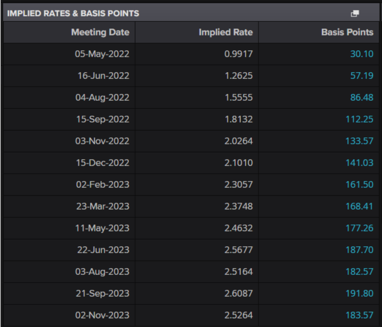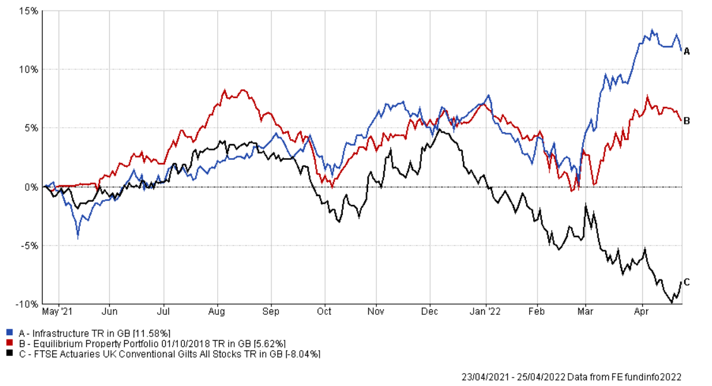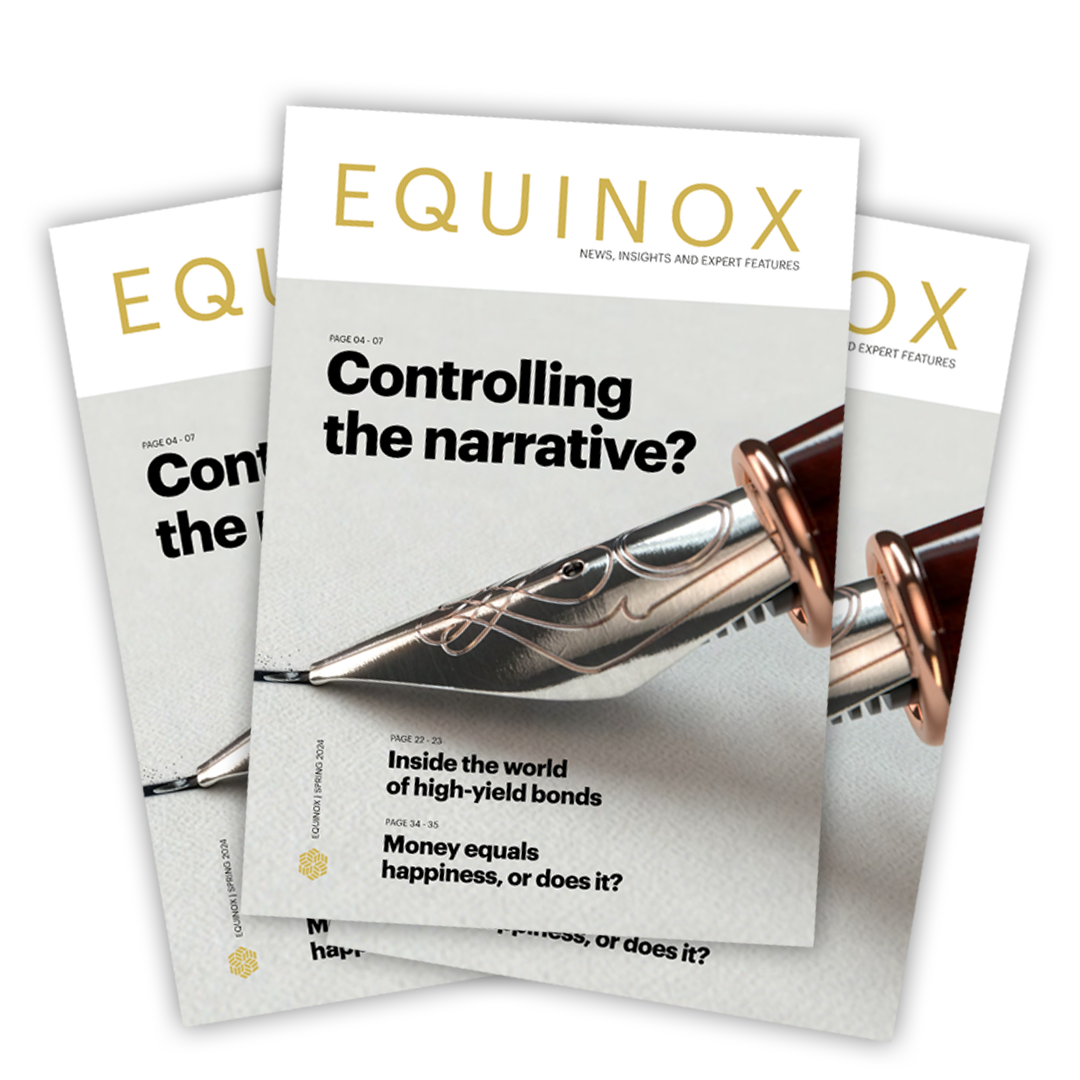UK inflation is running at multi-decade highs, impacting both investments and future spending power.
Demand from newly reopened economies has been met by supply chain issues and rising energy prices have been exacerbated through the terrible conflict in the Ukraine. The result – spiralling costs for manufacturers and suppliers are being passed through to consumers as inflation runs rife.
What is inflation and how it is measured?
Inflation is a measure of how the cost-of-living changes from year to year.
The Office of National Statistics (ONS) publishes the latest annual inflation rate each month taking into consideration the costs of goods and services of a ‘typical’ UK consumer.
The basket of goods changes over time to take into consideration general trends in consumer spending. For instance, the recent shift from alcohol and cigarettes towards healthier living inclusions such as avocado, home office equipment, gym memberships and protein shakes. Consumers’ growing interest in exercise has meant that climbing, crop tops and sports bras have now been added to the inflationary basket too.
The problem with averages or ‘typical’ people is that most people aren’t ‘typical’ – I know I can’t recall the last time I booked a climbing lesson!
If you’re interested, the below inflation calculator from the Office of National Statistics (ONS) looks to provide a personal inflation rate in comparison to the official consumer price index (CPI): ONS Inflation Calculator.
Getting real value
Looking forward, £100 today will still be £100 in the future but due to inflation it won’t go as far. In other words, it will have less value in real terms.
If you’re reliant on savings for future spending, it is important that those savings rise with inflation or they may not cover your desired spending requirements.
When interest rates are low, your deposit account is losing spending power year after year.
The only way to maintain spending power is through investment but not all investments like inflation, whereas others relatively thrive in high-inflation environments.
The bad news…
Historically, rising inflation expectations are met with rising interest rates which quell pressure by dampening demand and often economic growth.
Table one (below) shows the market-implied base rate set by the Bank of England Monetary Policy Committee at their future meeting dates.

Source: Refinitiv Eikon (26 April 2022)
As of May 2022, the market is implying ‘ten’ rate rises by the end of next summer 2023.
Bonds that pay a fixed rate, or coupon, will continue to pay the same amount which won’t look as attractive when you can expect a higher rate of interest without taking on any risk. Bond investors will look to pay less for the bonds which can lead to losses in bond markets. Bonds that are more sensitive to interest rates are likely to struggle.
Equities – shares in companies – are also impacted. Rising interest rates lead to a higher ‘discount rate’, the rate that future cash flow is discounted back to present value. Future earnings, like your savings, will not be as valuable as they were, so investors are likely to put a lower value on a company, leading to losses in some sectors in equity markets. Other companies with high debt may see cost of debt servicing rise, at the same time as other costs and many may be unable to pass the costs to investors leading to lower future earnings.
The last two paragraphs appear bleak but don’t worry, there are options available and opportunities that could potentially beat cash and inflation as markets come to terms with the unfolding environment.
For some time now, we’ve been building up positions in asset classes and areas of the market that we feel can weather an inflation storm better than others.
Keeping it ‘real’
Earlier in the year, we tweaked the way we classify some assets by creating a new asset class. ‘Real assets’ are actually nothing new and we’ve held them in different guises in the portfolio for some time. Property and Infrastructure funds long held in portfolios are now found in this asset class and we see them as great investments for inflationary periods.
In a broader context we view ‘real assets’ as investments backed by something physical such as buildings, roads, or windfarms for instance. They all tend to be income generating whether through rent, tolls or otherwise, and what’s more, they can be inflation protected. This protection of income is important, it is a big factor in how the assets are valued. Real assets then have good inflation-linked capital and income growth.
We have been increasing the basket of Real Estate Investment Trusts (REIT’s), gaining more exposure in selected specialist property sectors that we feel are both well placed for structural growth from increased demand and can benefit from inflation protection too. Regular rent reviews with inflation-linked increases on properties can be written into the tenancy agreement, for example.
Our Infrastructure exposure also scores on multiple fronts as global demand for improved and updated infrastructure is met with government-backed cheques. Our funds have considerable exposure to renewable energy and benefits from huge public investment.
Chart one (below) shows a representative portfolio of our infrastructure and property funds against the FTSE UK Gilt index over the past year. The Russian invasion of Ukraine towards the end of February added to inflationary pressures and coincides with returns deviating.

Source: FE Analytics
Quality assured
Equity, whilst not having any specific in-built inflation hedge, tends to fare well in mild inflation as company earnings can also benefit from inflation.
In high-inflation environments, some companies may see earnings fall as they are unable to pass increasing costs to clients and, in general, demand may be lower as people tighten their belts.
Not all equity behaves the same, the asset class can be broken down by region or by factor.
A factor breakdown classifies companies according to characteristics such as growth, value, or quality, which is where we will focus.
Often, quality companies will have strong balance sheets with low debt-to- service and high reserves that allow them to continue operating through economic downturns or they have market leadership giving pricing power and allows them to pass on cost to clients better than competitors.
We like quality companies as we believe they perform reasonably well throughout the economic cycle. They are likely to perform better than other areas of the market as growth slows or even as the economy slips into a recession induced by central bank tightening.
Our approach
We’ve seen that inflation impacts us all but the effect on cost of living depends on an individual’s personal lifestyle.
In much the same way inflation impacts all assets but its effects are very much determined by the characteristics of the investment.
Reliance on savings and investments, particularly in retirement, for income means it is hugely important for them to maintain or grow their real value over time.
When constructing portfolios, we are very considerate of the direct and indirect impacts of inflation on investment returns.
Our core portfolios are always diversified and positioned according to our outlook and based on this, we have been strengthening our ‘real assets’ and quality equity exposure.
Past performance is for illustrative purposes only and cannot be guaranteed to apply in the future.
This blog is intended as an informative piece and does not construe advice. If you have any further questions, please don’t hesitate to get in touch with us using the form below or by reaching out to your usual Equilibrium contact.



